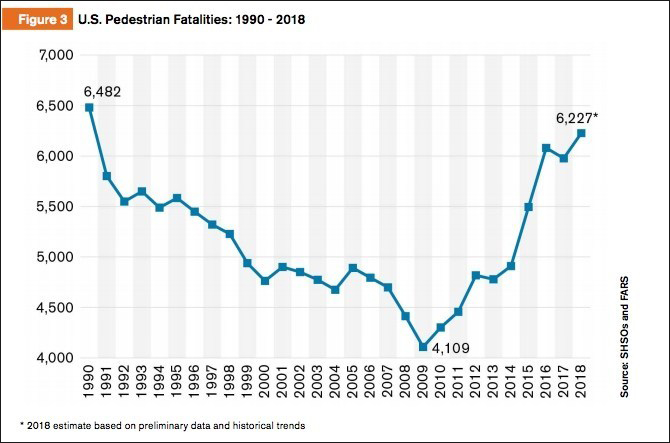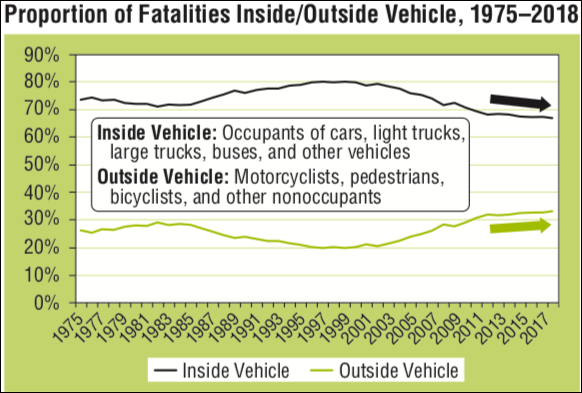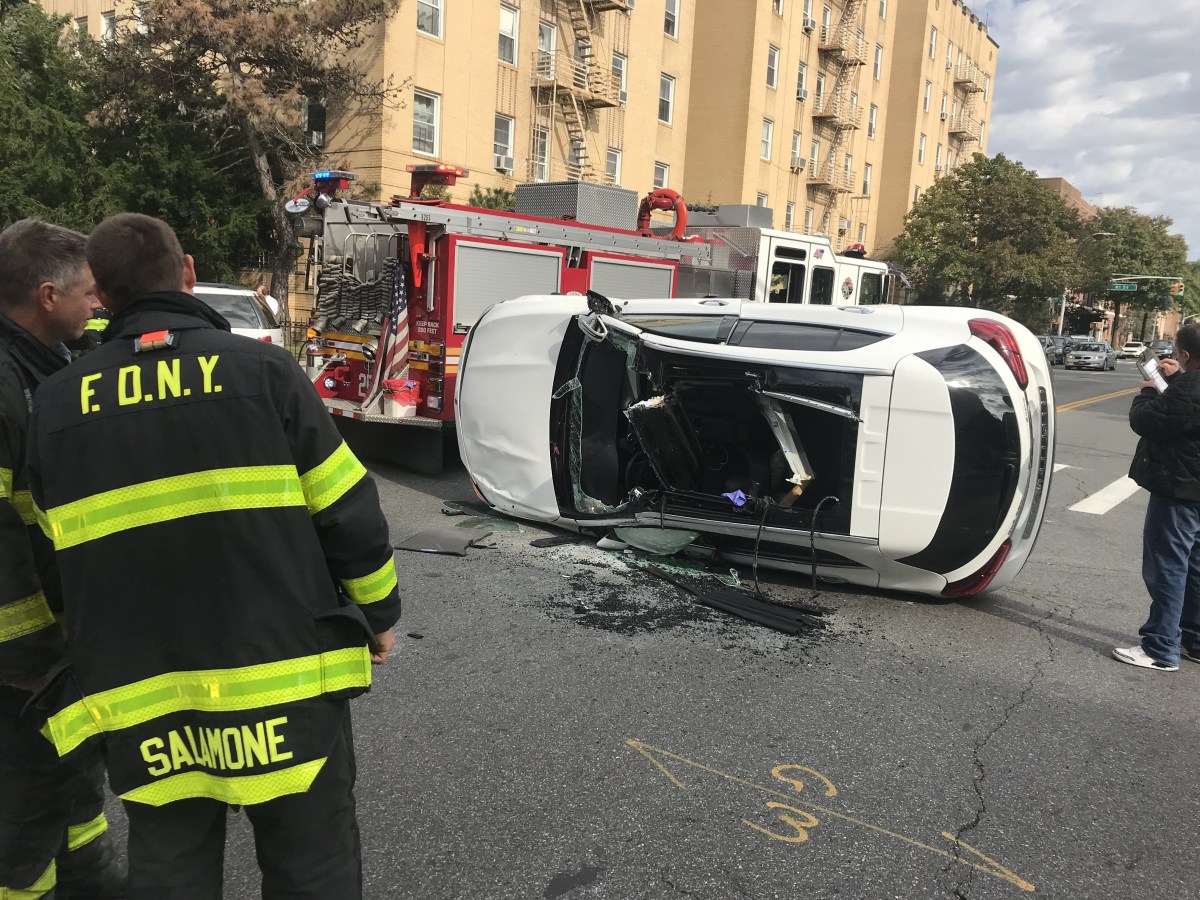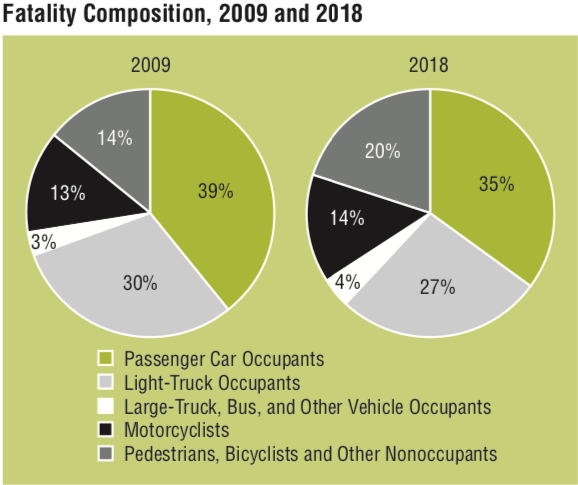Fatal car crashes are down for the second straight year across the nation — but the number of pedestrians and cyclists killed by motorists are up again, further evidence that cars are getting safer only for people inside the vehicle.
According to final 2018 data released today by the National Highway Traffic Safety Administration, 36,560 people were killed in motor vehicle traffic crashes last year, a 2.4-percent decrease from 2017, which also had experienced a decrease from the year before (albeit just 0.9 percent).
At the same time, pedestrians deaths were up 3.4 percent last year — rising from 6,075 to 6,283 — continuing an unbroken upward trend in the U.S. since 2009, when 4,109 pedestrians were killed by motorists.

Cyclists are also being killed in higher numbers. In 2018, 857 bicyclists were killed nationwide, up from 806, an increase of 6.3.
The reason for the crossing safety trends is clear: cars are getting safer for their occupants and less safe for everyone else.
Following a trend that has continued since the rise of the SUV in the late 1990s, the proportion of fatalities occurring outside of cars rose from a low of 20 per- cent in 1996 to a high of 34 percent in 2018 (see chart below).
Or, as the Wall Street Journal put it in the flat prose of journalism: "New safety technologies in cars today have so far fallen short in protecting many outside the vehicle."
The soaring fatality rate for pedestrians and cyclists — occurring at the same time as drivers are getting safer — has encouraged federal regulators to take a new look at how car crash ratings are even devised, the agency announced last week.
But the statement makes no reference to the most vulnerable road users, deferring, as always, to American consumers, rather than all Americans.

“Our [crash test] program has been a tremendous success and has saved many lives, but far too many American families still lose loved ones every year, and we firmly believe that vehicles can and should be even safer in the future,” the agency's Acting Administrator James Owens said. “That is why NHTSA is working on improving the program to make the 5-Star Safety Ratings Program even more dynamic, and to accelerate NCAP modernization to keep pace with advancements in safety technology.
"American car buyers want safety, and NHTSA wants to help by creating additional market-based incentives for automakers to continue investing in innovative safety technologies that will save lives and prevent injuries," he added.
Distracted driving remains a major concern. The report says that 2,841 of the nation's fatalities, or 7.8 percent, were a result of distraction. Yes, it's down 12.4 percent from 2017, but the numbers of victims is likely much higher because of under-reporting.
The federal report had other bombshells buried in it, including:
- Female pedestrian deaths were up 4.8 percent compared to 3 percent for male pedestrians. Among cyclists, the percent increase in deaths were the same regardless of gender.
- Cyclists are increasingly susceptible at night, with nighttime fatalities increasing 9.6 percent last year. Pedestrian nighttime deaths were up 4.6 percent. The future does not look bright in this area, either. A recent study by the AAA revealed that the newfangled “pedestrian detection systems” don't work at all when they were most needed — at night.
- Drunk driving fatalities were down nationally by 3.6 percent — but are up by double-digit percentages in many states.
- Alaska (up 32 percent)
- Minnesota (up 25 percent)
- Montana (up 39 percent)
- New Hampshire (up 78 percent)
- South Dakota (up 25 percent)
- Utah (up 13 percent)
- Similarly, drunk driving fatalities were down significantly in several states.
- Hawaii (down 16.7 percent)
- Kansas (down 15.4 percent)
- Kentucky (down 23.5 percent)
- Maryland (down 33 percent)
- North Dakota (down 38 percent)
- Rhode Island (down 41 percent)
- West Virginia (down 18.6 percent)
- Wyoming (down 26 percent)
- Passenger car occupants still make up the plurality of victims of auto crashes (35 percent of all fatalities, down from 39 percent in 2009). The only group whose share of the total fatality numbers has increased are cyclists and pedestrians (now 20 percent of all victims, up from 14 percent in 2009).







